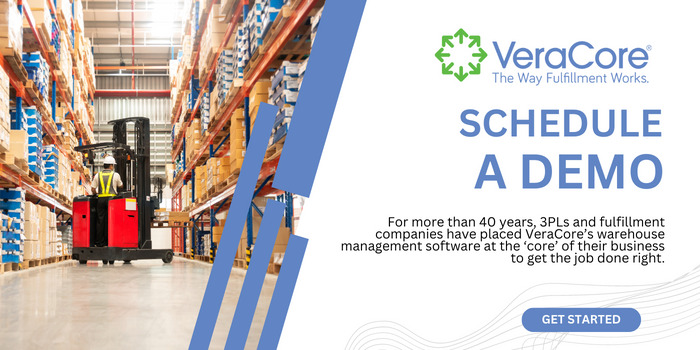Your warehouse workflow dictates how products move through the supply chain. If you are not agile and ready to avoid common challenges, your failure is felt throughout the chain. To remain an asset in supply chain management, you need to avoid common challenges to reduce the risk of congestion in the chain. Here we look at nine common warehouse management challenges with tips on how to avoid them.
1. Picking Accuracy
The goal in warehouse management is to avoid having to count or pick an item twice. This can be avoided using scanning technology in hand with a warehouse management system. Your processes are automated so that should someone try to count or pick an order twice, your system notifies you of the error.
2. Space Inefficiency
Underutilized warehouse space is often related to ineffective planning and failure to take advantage of unused space. You can optimize warehouse space to make your business more profitable by adopting some space efficiency improvements:
- Think vertically when considering your square footage so you aren’t limited by the footprint of your warehouse
- Use warehouse management software that considers your square footage and inventory to make smarter location decisions
- Automate put aways and picking to improve speed so you don’t have as much overlap on the floor, opening up more space
- Reconsider the layout of your warehouse to find opportunities to map out how space is used
- Use dynamic slotting/staging for top sellers to improve efficiencies and product accessibility
- Use data to predict space requirements for busy seasons, sales events, and new product onboarding
These tips help improve space allocation and availability to attract more customers.
3. Ineffective Inventory Management
Ineffective inventory management contributes to several challenges, including:
- Misplaced products
- Picking accuracy
- Increased backorders due to stock shortages
- Increased order cancellations due to lagging fulfillment times
- Delayed shipping due to miscounts or lost items
- Inventory miscounts
Warehouse management systems ensure you maintain real-time inventory counts and tracking to avoid all of the above issues.
4. Not Preparing for Seasonal Demands
Most, if not all, 3PL warehouses face seasonal demands throughout the year. Failing to prepare for increasing demands creates unacceptable delays in fulfillment and negative customer experiences. This can lead to the loss of major customers, which can put you out of business. A WMS will ensure you avoid common seasonal challenges:
- Insufficient inventory
- Insufficient picking staff
- Increased overtime
- Lost items
- Picking errors
- Inability to locate products for quick order fulfillment
A WMS prepares your team, ensuring you have appropriate stock levels and increased pickers to avoid overtime. You can use past seasonal performance to reach out to distributors, retailers, manufacturers, transporters, and other sources to ensure they are prepared with appropriate inventory shipments planned. With accurate information, everyone in the supply chain can do their part to avoid backlogs and reduce canceled orders. A WMS allows you to:
- Forecast seasonal inventory levels
- Reorganize dynamic slotting to ensure convenient location for faster order picking
- Map out logical paths for equipment and picker paths to improve workflow
- Improve pallet flow rack systems
5. Inefficient Time Management
Inefficient time management creates picking congestion and backlogs. When you use a WMS and scanning technology, you can reduce the time to improve workflows and avoid delays. Time-consuming manual tasks are eliminated, reducing errors. Fewer steps through automation also reduce the time per order, so you improve time management.
6. Order Management Errors
Order management errors can occur at any stage following the receipt of the order. If there are errors in your order management processes in picking, packing, shipping, and returns, the entire order falls apart. Repeating missed steps or missteps creates time loss eating into your bottom line. It also reduces your ability to meet the needs of your customers, which can lead to client loss. An effective order management system (OMS) works with your WMS to streamline the process and automate steps so nothing is missed.
7. Poor Use of Labor Resources
Your entire third-party logistics team must understand their roles and have the tools required to improve efficiency. Poor use of your labor resources costs money. It also reduces your ability to meet the needs of today’s demanding customers. A WMS helps automate processes and improve workflows across your entire team and your distributors, retailers, manufacturers, and transporters. Automation reduces labor costs by improving workflows, reducing errors, and eliminating unnecessary handling. A WMS also breaks down silos to improve collaboration and reduce the risk of duplication of tasks and inventory redundancies.
8. No Transparency
If you can’t track orders, maintain accurate inventory counts, or easily produce bills of lading/order documents, your process lacks transparency. Each step of your process should be completely visible throughout the entire supply chain. WMS software ensures traceability and, in turn, transparency.
9. Poor Damage Control
There is no excuse for extensive losses due to damaged goods. Introducing damage control best practices will reduce damage as well as accidents, such as protective pallet rack protectors, nets, anti-slip flooring, warehouse inspections, and low clearance warning bars.
To avoid these common warehouse challenges, become more agile, and increase profitability, you can invest in a WMS solution to streamline workflows.
VeraCore Smart 3PL Fulfillment
For more than 40 years, 3PLs and fulfillment companies have placed VeraCore’s warehouse management software at the ‘core’ of their business to get the job done right. Ready to take your business to new heights? To learn how smart 3PL fulfillment software can help grow your business, check out our solutions.


VeraCore is SaaS order and warehouse management software trusted by top fulfillment companies and 3PLs. Affordable, flexible, easy to use; VeraCore is everything you need to keep clients happy and run a lean operation.
With VeraCore, you can grow your business and handle any challenge with ease. Rules-based automation enables you to control all aspects of your warehouse operation and satisfy each of your clients’ unique requirements.
Hundreds of fulfillment service providers and 10,000+ fulfillment clients place VeraCore at the “core” of their business to get the job done right, for over 40 years.

